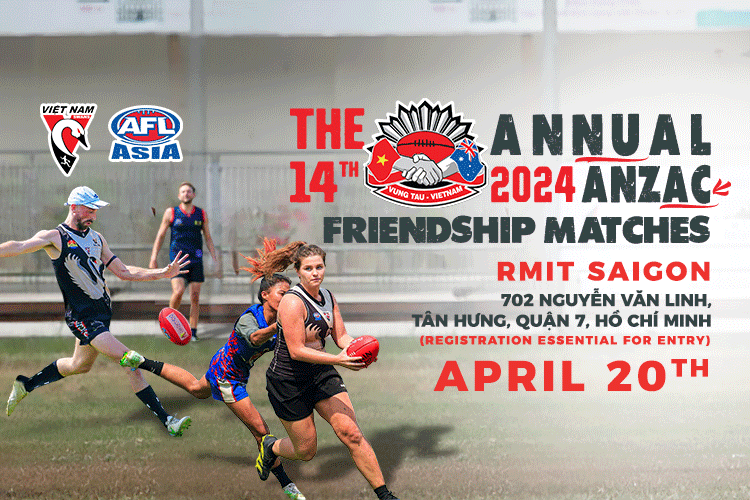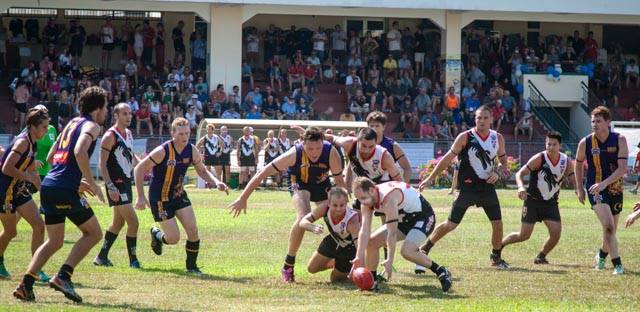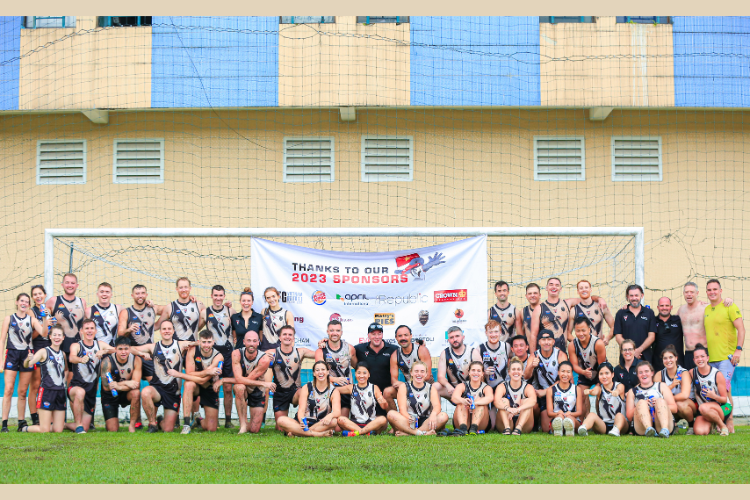
19 per cent of players at the 2013 Asian Champs were born in 21 ‘other’ countries. Click to enlarge.
AFL Asia’s new website at www.afl-asia.com has reported on the numbers at the 2013 Asian Champs. The report is reproduced below.
The 2013 Asian Champs saw the Hong Kong Dragons with the right numbers on the scoreboard – and now, AFL Asia has a closer look at the numbers behind the teams and nationalities of players…
Overall: Australians Vs Non Australians
- A total of 382 players from 13 clubs played in the Champs.
- Of that figure, 19 per cent (72) were non Australian and represented 21 countries.
Non Australians
- The highest number of Non Australians came from Lao (10) followed by NZ (8), USA (8). England (7), Japan (6) and China (5).
Biggest clubs by total numbers
- Singapore had the highest number of players with 54 (and finished in 3rd position).
- Champions, Hong Kong, travelled with 46.
- Jakarta (35), Thailand (34), Macau (34) and Vietnam (32) all travelled in the 30s.
- The Philippines, who were the runners up, had a squad of 27.
- Bali toured with the smallest squad: 12.
Clubs with most numbers of non Australians
- The Macau Lightning toured with the most non Australians: 13.
- Non Australians represented 38 per cent of Macau’s team which was the same percentage as the Lao Elephants (which had 10 non Australians (all Laoatian)).
- Teams with the highest percentage for non Australians were Japan with 42 per cent followed by China with 40 per cent. Both had 8 non Australians each.
It is quite clear from these statistics that Australian Rules Football in Asia is being spread significantly further than just isolated pockets of Australian expats. It also shows that the Asian Champs is already an established iconic Australian cultural and economic event in the region. It is also enjoying broadening appeal and increasing relevance.
Importantly, with the establishment of AFL Asia, we are now in a position to track the event’s collective progress in terms of:
- Total reach (Australian and non Australian); and
- Reach to non Australians
It is also noted that the statistics above only consider the numbers of players and nationalities of those who toured to the Asian Championships. It does not include friends and support staff who joined the tour and nor does it include the people who play back in their Asian country of residence but couldn’t make this particular tour.
To see the full results in a table format, click onto 2013 Asian Champs – Team Nos. and Nationalities.





















